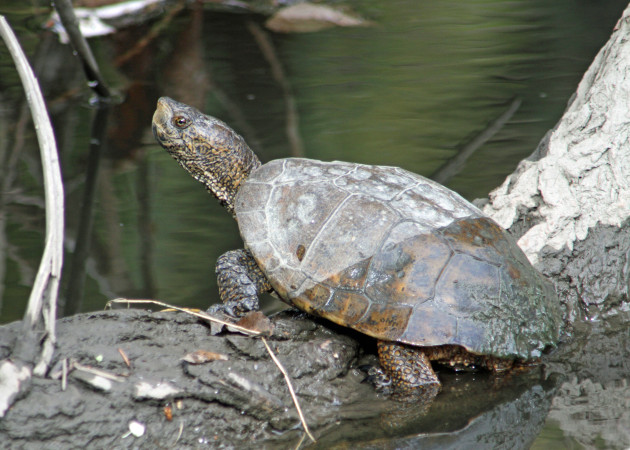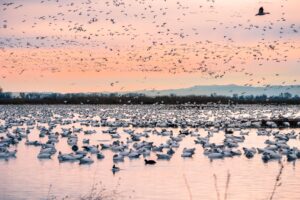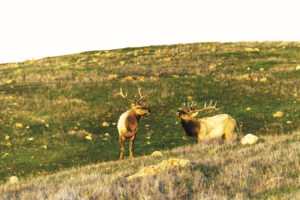Santa Clara Valley Water District officials say they are facing an “unprecedented shortage” of water this year, and as the district’s drinking water reservoirs run dry, it is cutting releases into the county’s creeks and recharge ponds to conserve.

In dry years SCVWD imports up to 99 percent of its drinking water from state and federal sources, and this year both the Central Valley Project and the California State Water Project implemented massive water cuts that meant the district received only 5 percent of its usual allowance. So the district is reducing recharge from the Anderson reservoir and suspending releases from the Calero reservoir altogether until supplies increase. According to district spokesperson Marta M. Lugo this is the first time the district has been forced to make such drastic cuts. The decision will likely change the state of the county’s aquatic ecosystems, forcing wildlife to adapt to man’s water cuts as well as Mother Nature’s.
“With the closure of some reservoir outlets we are concerned about threatened and endangered species,” said Greg Kerekez, co-founder of the Urban Wildlife Research Project. In Los Alamitos Creek, for instance, steelhead trout and Western pond turtles may be vulnerable, Kerekez said. And since the drought is so widespread, there are no suitable options for relocating species that are at risk. “Unfortunately,” Lugo said, “these dry creek and pond conditions are being seen statewide.”

Species could be spared, however, if upwelling from the aquifer and pump stations sustains water levels downstream, or if the small population of beavers who set up camp in downtown San Jose build dams. Heidi Perryman, the president and founder of Worth A Dam, says that dams create ponds that could act as refuge for wildlife in the Guadalupe River and Los Gatos Creek.
But even with some refuge, there will be intense competition for dwindling resources. Less hardy invasive species will likely perish in the contest, but even native species well-adapted to climate extremes could suffer. Both SCVWD and the California Department of Fish and Wildlife are monitoring the effects of the water stress on native and non-native species alike.
One way to ease the burden on wildlife is to cut back on our use of water. The Santa Clara water district has passed a resolution calling for a mandatory 20 percent cut, but the Urban Wildlife Research Project urges residents to cut their water use by even more. Kerekez said he has made a 50 percent reduction at his personal residence. “Businesses, renters and private property owners should be making every effort to conserve,” he said.





